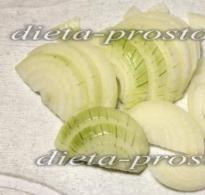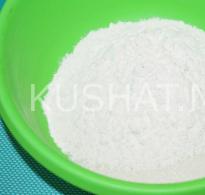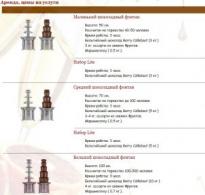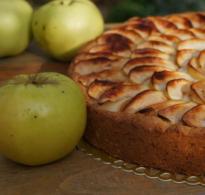How to make the effect of "old paper. Six easy ways to age paper at home How to make paper look old
Aged paper is used to decorate various crafts: postcards, albums, etc. The aging process itself is called distressing, its goal is to give a sheet of paper a characteristic color and texture. Let's take a look at a few stressors that you can use at home.
1. Sunbeams
A sheet of paper should be placed so that direct sunlight falls on it. This is the simplest and surest way of distressing: the paper will age evenly, while eliminating the possibility of accidental damage to the sheet. The only drawback is the length of the process.
2. Brown pencil
A small piece of paper is densely colored with a soft dark brown pencil, with the same pencil an uneven contour is applied along the edges of the workpiece. Then they rub the sheet with a painted piece of paper, achieving the effect of aging.
3. Coffee
For half a glass of boiling water, you need to take 2-3 tablespoons of coffee (preferably natural ground). After cooling, the paper is placed in any flat container with a side (for example, a baking sheet) and coffee is poured. The liquid is evenly distributed over the entire surface with a brush or sponge. The effect of "variegated old spots" can be achieved by sprinkling instant coffee granules on top of the leaf. The paper is left for 10 minutes, then excess moisture is removed with a paper towel and dried in the oven or microwave.
4. Tea
First you need to brew tea (2 bags per glass of water) and leave for 45 minutes. After that, tea is applied to the leaf using a bag, in some places the paper can be slightly rubbed, this will enhance the effect of "old age". Excess liquid is removed with a towel, the sheet is dried in the oven or microwave.

5. Milk
Using a brush, milk is applied to the sheet, allowed to dry, and then ironed. The higher the fat content of the milk, the darker the paper will turn out.
6. Craquelure varnish
Lacquer cover the entire surface of the sheet. During the drying process, the lacquered surface cracks, giving the paper an aged tint. When choosing this method, it must be borne in mind that the inscription must be made in advance.
7. Potassium permanganate
Several granules of potassium permanganate are dissolved in water, the color of the solution should be dark pink. The sheet is placed in the solution and left for 3-5 minutes, depending on the density of the paper and the desired effect, and then dried. Work must be done with gloves.
We process the edges
Antique sheets have an uneven edge, so the edges of a sheet of artificially aged paper also need to be processed. To do this, use sandpaper, a grater, a hard cloth or a sponge. The edges of the sheet can be wetted and rubbed or torn with your hands, and then carefully singe over an open fire. Using a candle flame, you can make a few dark spots in the middle of the sheet, but be careful when doing this, as the paper can catch fire.

If a piece of paper is crumpled and then smoothed and distressed, the effect of aging can be greatly enhanced.
During the processing of the sheet with tea or coffee, blades of grass or cereals can be added to the painting solution, thanks to which a special pattern will appear on the paper.
An interesting effect is obtained if the leaf is rubbed with a wax candle and dripped with wax in several places.
You can use several methods to age paper at the same time.
Fans of various homemade products constantly need to look for some new tips on how to do something interesting with their own hands. Now I want to talk about how at home. This technique can come in handy if you need to prepare original invitations, write a letter or even just an interesting note to your loved one.
How to age paper at home?
He will consider several simple ways by which a piece of "ancient papyrus" can be obtained from a modern snow-white sheet. By the way, everything you need for such a transformation can be found in every home.
Method One: Tea
To do this, you need to brew this drink of a certain strength (the color of the page will depend on this) and put a leaf there at night. The next morning the paper will look as it was intended. You can also experiment with tea leaves, they leave pretty circles on paper.
Method number 2: Coffee with milk
The next method, which tells how to age paper at home, involves the use of coffee with sugar and milk. This ready-made drink must be poured onto paper, and then ironed through cheesecloth. You will also need to work with the edges, cutting them off manually.

Method three: Let's remember Lenin's grandfather
How to age paper at home if there is no coffee or tea at hand? Use milk. So, the paper needs to be put on a flat surface and on top with a brush it is good to “paint over” it with milk. Let the sheet dry, and then iron it through the iron. The page will gradually turn yellow. Please note: the fatter the milk, the darker the finished leaf will be. This method is good to use if you need to give the product the appearance of paper miraculously saved from fire. The result is simply amazing!
Method number 4: Varnish!
And now we will tell you how to quickly age paper. To do this, you need to use which is sold in stores for artists. It needs to cover the surface of the sheet, and it seems to begin to crack, acquiring a certain shade. However, it is worth mentioning that later it will not be possible to write on this paper, so the inscription must be made in advance.
Method five, classic
But the easiest and surest way to age paper is to put it in the sun. The process will be quite lengthy, but failures or any mistakes are practically impossible - the paper will age evenly.
Method #6: Not for the faint of heart
There is another, but rather dangerous way to age paper at home. To do this, it must be put in the oven for a certain time. But in such a situation, it is very important to correctly calculate the temperature and time in order to avoid a fire. Still, this method is best used in exceptionally extreme cases.

Edge processing
When figuring out how to artificially age paper, do not lose sight of one very important point. The edges of your "manuscript" should be at least slightly frayed. The surest thing is to tear off the strips unevenly by hand (the edges of the sheet can be moistened, so they will tear more easily). On top of all this, you need to lightly singe with a candle flame, then the edge will look natural and very aesthetically pleasing. If you like, you can also make some dark spots on the paper (again using a flame). Just hold your leaf a little over the candle. However, you must be extremely careful so that it does not burn through.
The effect of aging paper (distressing) is one of the brightest and most stylish effects used in scrapbooking, scrapbooking and many other types of arts and crafts and creativity.
The purpose of artificial aging of paper is to obtain a characteristic color and texture, sometimes to enhance the effect, the edges of the paper are deliberately additionally torn, frayed or burned.
There are three ways to obtain aged paper: wait until the sheet ages naturally, buy ready-made sheets of old or aged paper, or make such paper at home. In this article, we will tell you how to artificially age paper (with tea or coffee).
How to age paper with coffee?
First of all, prepare the paper you plan to age. If you want the text to be printed on paper, print it out in advance - it is not always possible to print the text on an already aged sheet (printer ink does not stick well to aged paper). In addition to paper, we need coffee (instant or a mixture of instant and ground), paper towels, a sponge (or soft brush) and hot water.
Dissolve two to three tablespoons of coffee powder in half a glass of boiling water. Stir thoroughly and cool the liquid. Put the paper in a container (a baking sheet with a rim will do) and fill it with a solution. Spread the coffee over the surface of the paper with a brush or sponge. If desired, you can sprinkle paper with dry coffee granules and leave them for a short time (this will create the effect of colorful spots, uneven coloring of the sheet). Leave the paper in the water for 5-15 minutes (depending on the weight of the paper), and then remove excess moisture with a paper towel. After that, dry the paper in an oven preheated to 200 ° C for several minutes.
How to age paper with tea?
To age paper with tea, we will need several bags of black tea, hot water, a sponge (or paper towel) and, of course, the paper itself, which we will age.
Tea should first be brewed in boiling water (at a concentration of about 3-4 bags per 0.5 l of water - the stronger the tea is brewed, the richer the color on paper) and insist for one hour. Then we take out the bags from the cooled infusion and begin to apply tea on paper with their help. Tea can be applied in spots, stripes, in some places you can rub the leaf with a bag (this will enhance the effect of wear). When the paper is completely saturated with tea, remove excess liquid with a paper towel (or sponge). After that, the paper should be dried in a preheated oven (a few minutes at 180-200°C are enough).
How to age the edges of the paper?
Naturally aged paper often has jagged edges. To recreate this effect artificially, you can  pat them with your hands, rub them with sandpaper or a hard sponge, tear them in several places or singe them over the fire. However, in this case, a measure should be observed so that the edges look worn, but neat.
pat them with your hands, rub them with sandpaper or a hard sponge, tear them in several places or singe them over the fire. However, in this case, a measure should be observed so that the edges look worn, but neat.
To enhance the effect of paper aging (regardless of the method of aging), you can crumple the sheet into a ball before painting, and then straighten it. If rice (or other cereals), leaves, pieces of grass or other small objects of this kind are added to the solution during staining, an interesting uneven pattern forms on the sheet. The paper can also be rubbed with a wax candle or dripped with wax (paraffin) on its surface in several places.
I needed a background for steampunk jewelry. More precisely to themselves jewelry hands have not yet reached, But background made))
I've been looking for a long time for something that fits. background. Rummaged the Internet on the topic old drawings in good quality but didn't find anything like that. It would be better to find drawings of steam engines and mechanisms. And then they got Leonardo da Vinci drawings.
First of all I decided to find such dye, which would be in every home. I love versatility in do-it-yourself. I didn’t want to use paints, although my sister somehow made a rather believable old paper - a scroll with the help of paint and a washcloth.
But why look for the easy way? Conducted an experiment.

Made in 3 glasses strong tea, instant coffee and cocaine cocoa.

After dense pattern sheet (be sure to print it on a laser printer ) cut into 3 parts and soaked in a bath.

(Coffee, tea, cocoa)
Bottom line: cocoa leaves beautiful streaks, but in the end it almost doesn’t color the sheet and the streaks flow down. Also, the leaf becomes soft and loose. The coffee also didn't darken the drawing enough. The tea turned out to be number one. He not only gave yellowness to the sheet, but also, thanks to his composition, did not allow the paper to tear so easily.
So in the future I will use the usual Black tea!

No, nobody got sick Welding needed for concentration fluids and formations spots although better without it next time. Dry for a couple of hours in a warm place.
The edges did not fire. After that, the paper gets dirty for a long time and leaves soot on everything it touches.

Instead I trimmed the edges scissors. But how to give the paper more antiquity and make selective darkening along the edges without setting it on fire? Very simple! It's good that there is a soldering station and a hair dryer. With a stream of hot air, I very quickly processed the edges and painted a few spots in the center. Who does not have such a hair dryer, you can use a construction one. If not, and it is possible heat sheet over the lighter.





How to age paper? This question often worries those who are fond of scrapbooking and lovers of original messages. The article will tell you how to do it at home.
This article is intended for persons over 18 years of age.
Are you over 18 already?
How to age paper? Highlights
There are many ways to make this effect using improvised means. You can also do without them at all, using the natural energy of the sun. At home, you can age a sheet of paper in just a few minutes or in a few hours, including the drying time of the craft. For this you need to have:
- paper that is subject to aging;
- bath for soaking;
- pigment;
- tweezers.
Depending on what effect is expected, the pigment is also selected. Even a child can make aged paper with his own hands. It is only important that he does not use lighters and candles to process the edges of the sheet. These tools are recommended for use by those who have reached the age of 18.
To make aged paper, you must first wrinkle it with your hands. You can skip this step and move on to the next one. Besides the fact that it can be wrinkled by hand, it can be scratched with nails, torn near the edges or bent in any direction. For greater compliance, it is recommended to spray the surface with water from a spray bottle. When mechanical damage is done, it is necessary to proceed to its aging.
The sheet can be used blank or already with a drawing or an inscription. It is advisable to print the inscription on the printer, and not write by hand. The edges are also recommended to be treated with sandpaper to create a slight abrasion, or with candles / lighters to create traces of a transferred fire. If you leave the edges smooth, then you will not be able to fully convey the influence of time.
Artificially aged paper will become the basis for creating scrapbooking photo albums or for writing invitations.
All methods where it is necessary to use water require time for the craft to dry. To finish the aging procedure quickly, heat treatment of the surface can be used. This could be using an iron or a microwave oven.
It is not recommended to make such paper for examination. This is rather a comic version of adding years to the sheets. All sheets with and without text can be aged. If the text has already been applied, then you should carefully monitor the time spent in the solution of the craft. If you overdo it, then the text will deteriorate, and you will have to do everything again. Things are a little easier with clean sheets. With a long stay in the solution, they can spread in the hands, so you should always adhere to the specified time and not exceed it, wanting to achieve an even greater effect.
If you want to make the effect of antiquity in an unusual color, then you can use brilliant green. Just a few drops in a glass of water will make the solution rich and beautiful. If you want to achieve stains of color on the surface, then you do not need to stir the brilliant green. Instead of brilliant green, you can take potassium permanganate. A few crystals are recommended to be dissolved in a glass of water, and a leaf is placed in the solution.
If you are interested in how else to give an unusual color to paper, then it is dipped in water and placed on a rusty surface. Over time, rust appears on it.
If you want to use the most traditional methods of aging, then you will need tea and coffee. If you do not want to dry them, then use the oven for baking. To do this, put the prepared sheet on a baking sheet. Its edges should not go beyond the baking sheet. The oven should be turned on at 90 degrees and start applying tea or coffee brewing on paper. To evenly distribute the pigment, use a brush or foam rubber sponge. When the oven is hot, place the baking sheet with paper in it for 10 minutes. During this time, the paper will have time to color and dry. If a little paint is poured onto the bottom of the baking sheet, then this is not a problem. It will be absorbed onto the wrong layer of the craft.

In order to properly shape coffee-treated paper, it must be rubbed with coffee beans in some places. This will create an even greater effect of antiquity and the ruthless influence of time on things.
You can view available paper aging options online. There are many videos that go into detail about each of them. If you want to achieve the maximum effect, and time does not play a role, then you can put the paper for 10 years and forget about it. To give years, you can do without paints and tools. If the sun is outside, then the leaf can be left in the sun for several days. In summer, the process will go much faster than in spring. If during these few days the sun will hide the clouds and it will rain, then the process will be delayed.
Loose tea should be used for brewing. It will evenly transfer color. A couple of tablespoons of tea leaves should be poured with a glass of boiling water and left for 10 minutes. Then it must be filtered. Pour tea into the prepared bath and carefully place the paper there. We wait 2 minutes and take it out. On a flat surface, it is recommended to lay out the paper and leave to dry completely. If desired, in some places you can apply a few drops of tea leaves. This will create an uneven surface with a realistic look.
Creating the effect of antiquity with coffee is very similar to the previous version. First, strong coffee is prepared. To do this, 5 teaspoons of ground coffee are poured into 200 ml of water and infused for 10 minutes. Coffee must be filtered and poured into the bath. Place a wrinkled or whole leaf there and leave for 10 minutes. After the specified period of time has elapsed, the sheet is removed and dried in a natural way on a flat surface.
If you want to make spots on paper, then you can use high-fat milk (it is better to take homemade). Milk should be applied with a brush, and after drying, iron the paper with an iron. Under the influence of high temperatures, dark brown spots appear.

How to age paper in the microwave?
To age paper in the microwave, you need to place the sheet in a container and put everything in the microwave. The temperature must be at least 200 degrees. First, the craft must be moistened with tea or coffee. You can make the effect of antiquity with an iron without using other methods or in combination with them. If you use an iron, then you need to stock up on time and patience to successfully complete the work. Sheets are baked in the oven along with the solution, and the finished product is obtained at the output. After that, it is recommended to leave the paper for half an hour, and then proceed to drawing or writing text.
How to age paper without water?
If there is no desire to mess with water when creating crafts, then it can be done in a dry way. It involves the use of dry pigments for aging. You can take the neck of a pastel-colored pencil and crumble it. By rubbing it is necessary to apply the resulting powder to the surface with different intensity. If you take several pencil colors, for example, yellow and gray, you will get even better to convey the influence of time. It doesn’t matter how you want to do the craft, (without coffee or with it) the result will be an excellent result. You can ask the question: “Why bother creating antiquities on paper at all, if it can be done faster with the help of Photoshop?” But the process of creating at home is very pleasing with the result, because every time new patterns, stains and colors are obtained.
How to age the edges of the paper?
Finishing the edges is just as important as finishing the entire sheet. If you want to create the effect of transferring a fire, then you should set fire to the edges with a candle or a lighter. But this is very dangerous, so it's best to do it over the sink. In case of arson of the entire craft, you need to turn on the water and prevent the spread of flame.
Scrapbooking is a popular technique among crafters. This is how unique photo albums and books are created using photographs. This is not just a photo album, but life stories. It is quite logical that the effect of aging of elements is often used here. Photographs, newspaper clippings, letters may be deliberately aged. To do this, use the methods listed above. Using several methods in one photo album will only decorate it and make it more fun.






